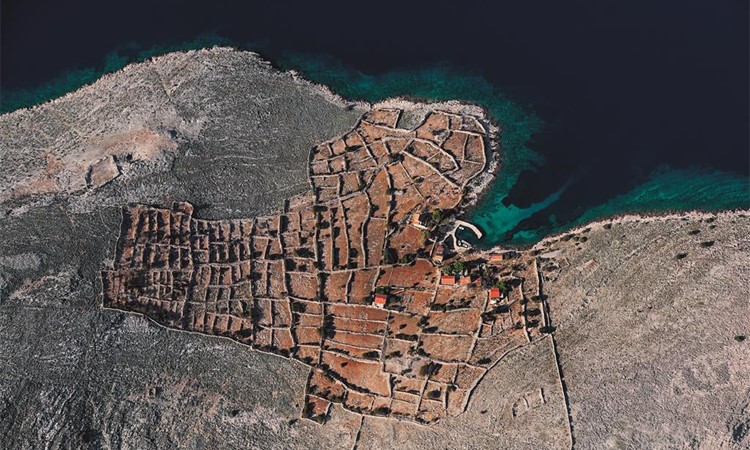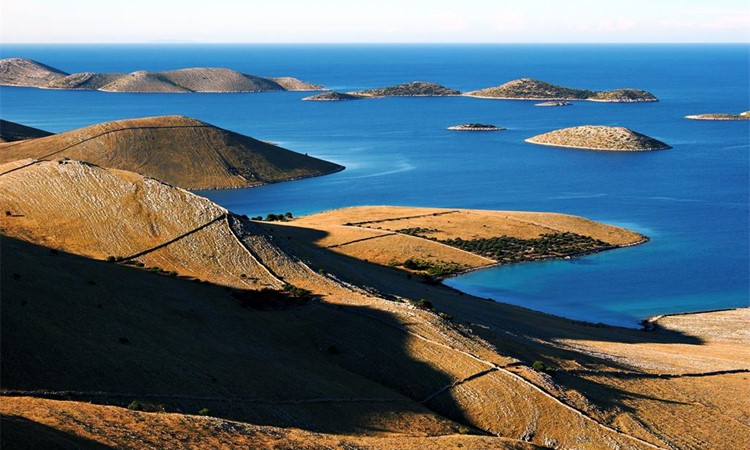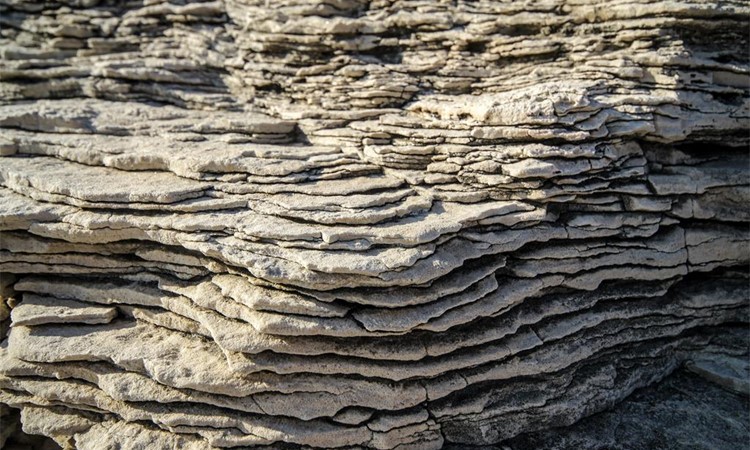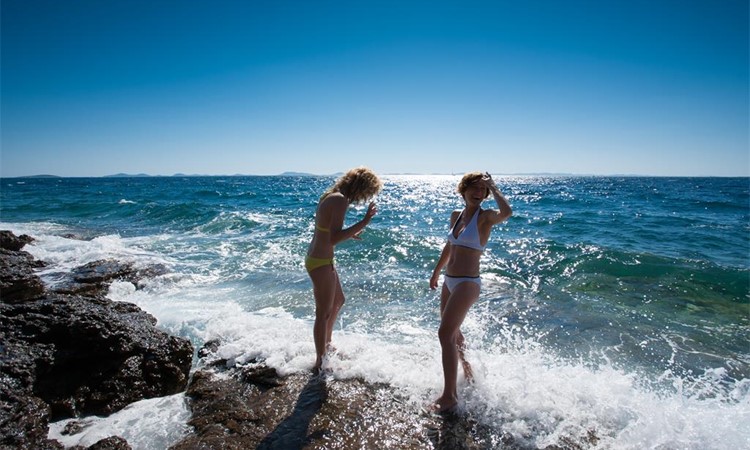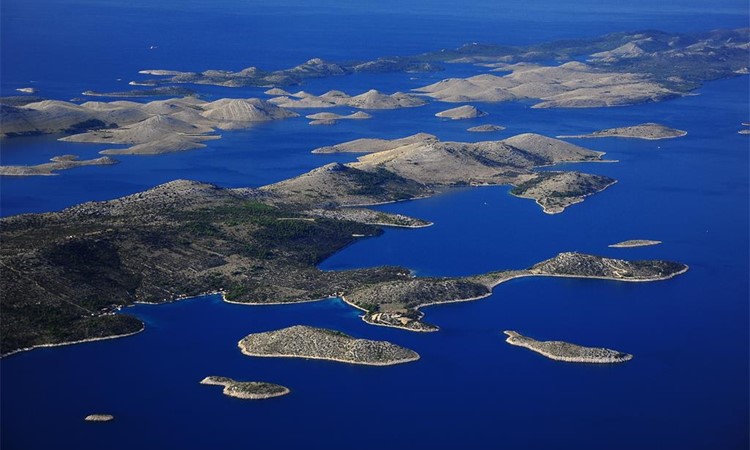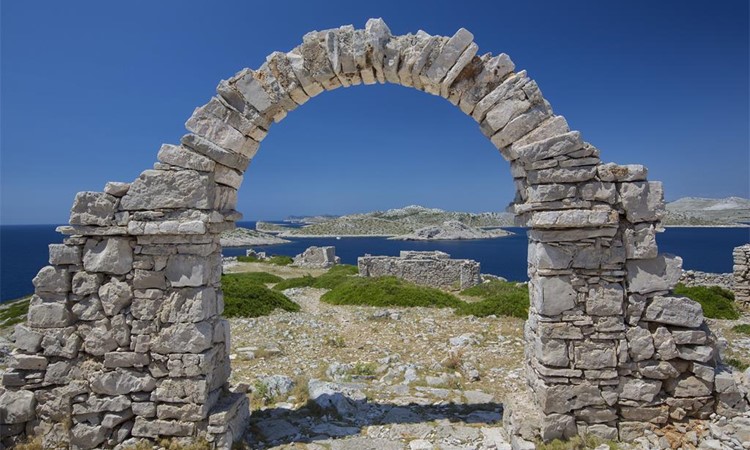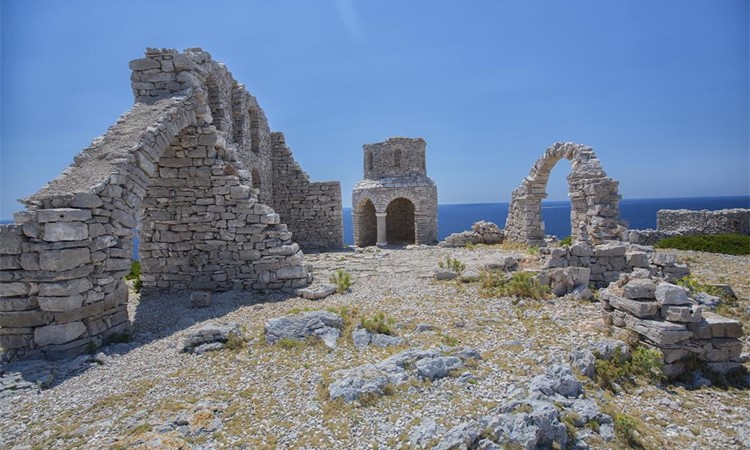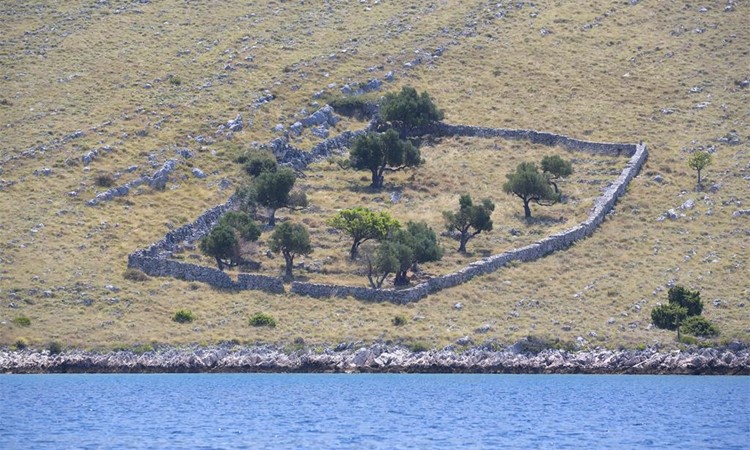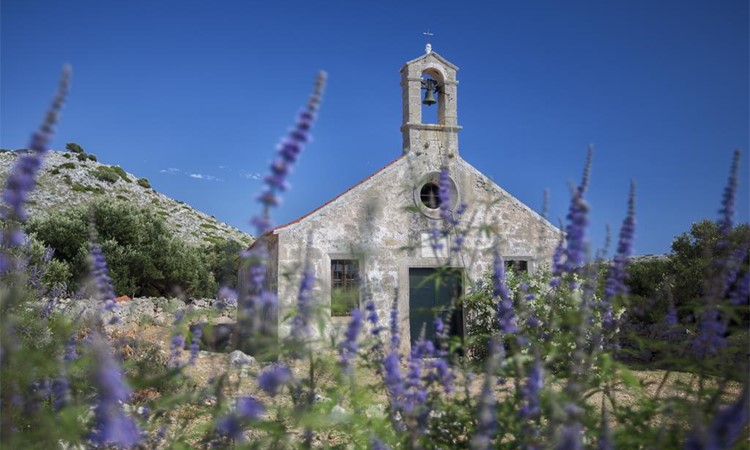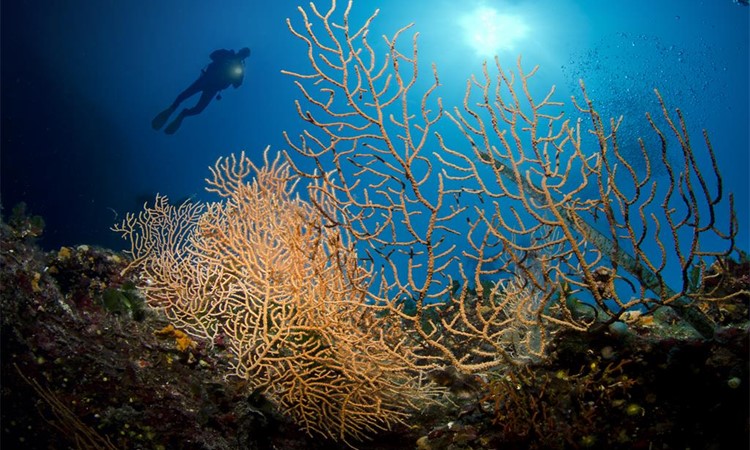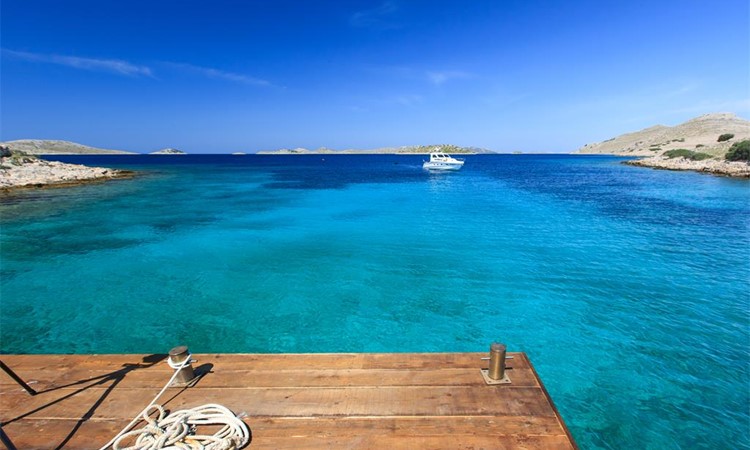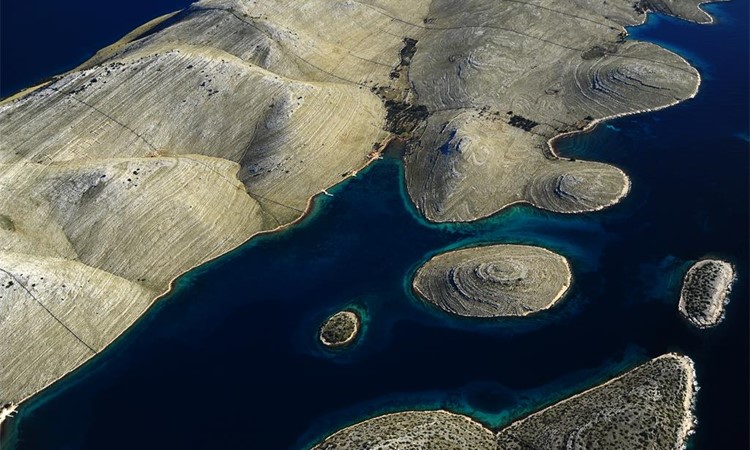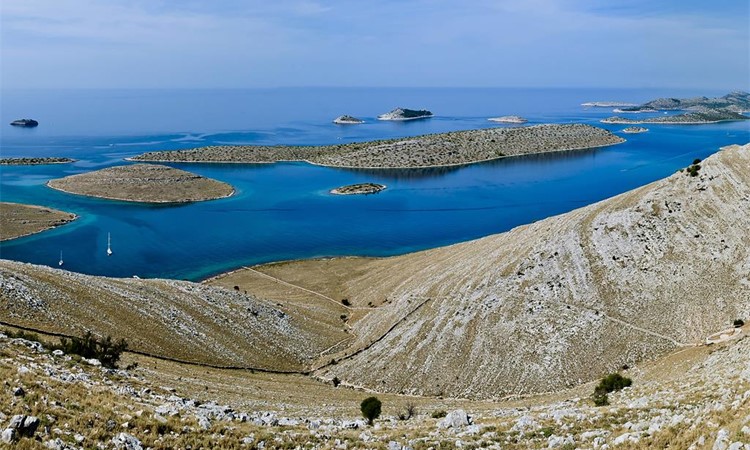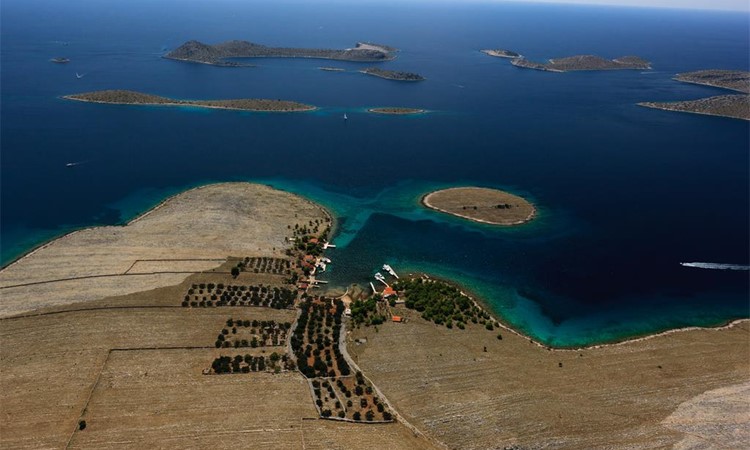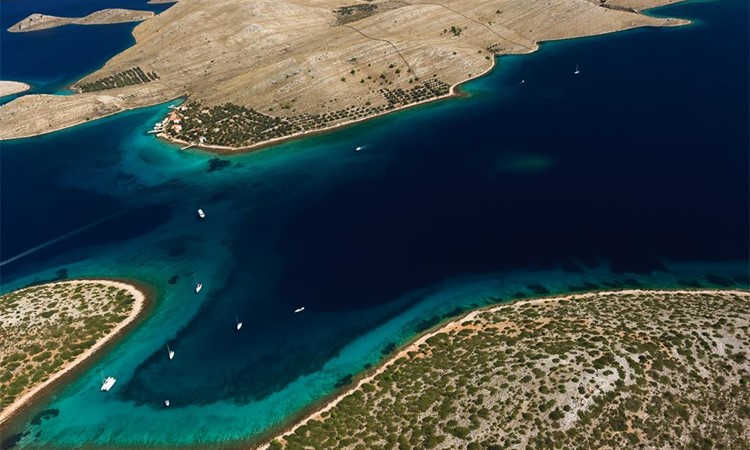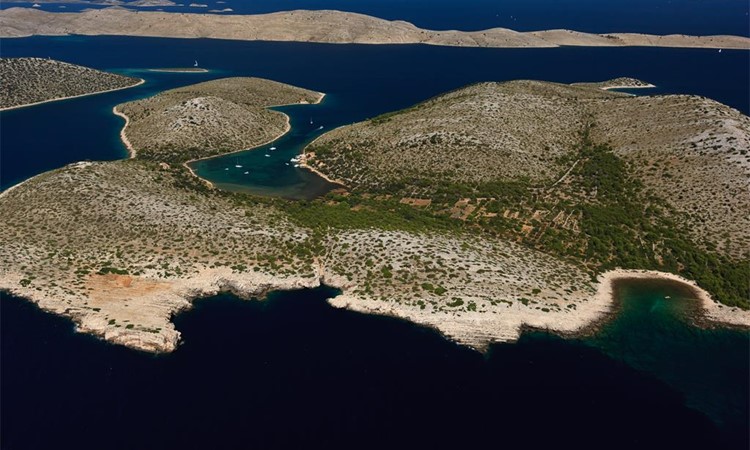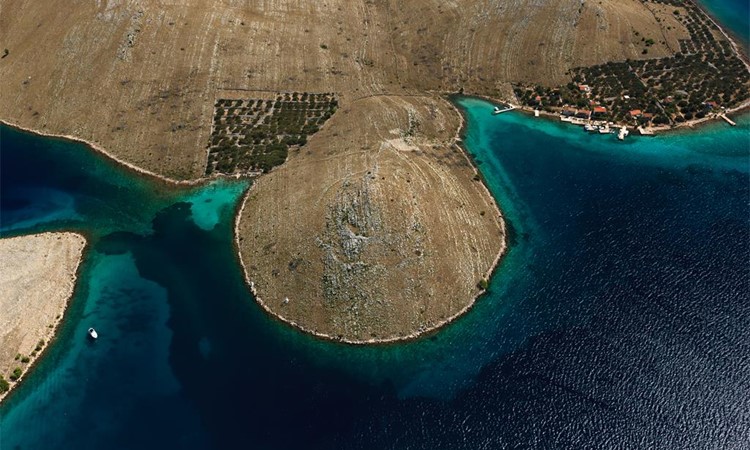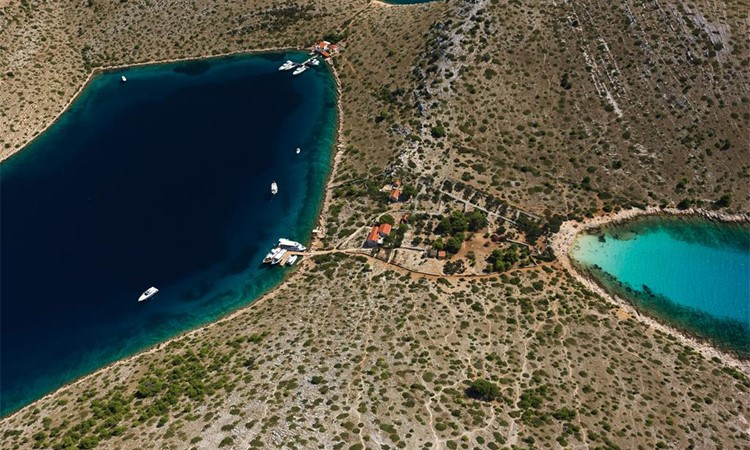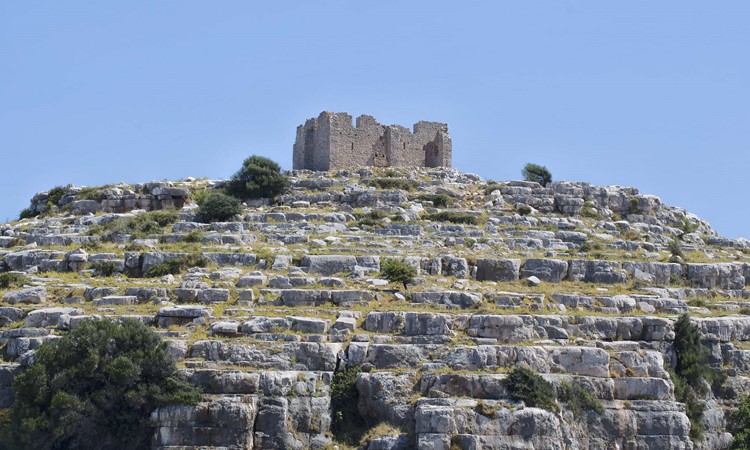KRKA NATIONAL PARK
Krka NP encompasses the area along the course of the Krka River, which flows through a deep and picturesque canyon for over 75 km and creates roaring waterfalls like the grand "Roški slap" and the fantastic "Skradinski buk" (Krka falls 48 m), Europe's largest travertine cascade system. There are also two remarkable cultural monuments within the park, the Visovac Monastery and the Krka Monastery.
Visovac Island stands in the middle of a lake-like expansion, where green waters have created a karst plateau, giving rise to the harmonious coupling of natural and historical heritage. It was first mentioned in the 14th century documents, whereas at about 1445 the Franciscans inhabited the island, expanded its area and took up science and education, erecting the church and in 1576 the monastery. The island, transformed by the monks over centuries of diligent work into a charming dwelling full of trees, colourful flowers, fruits and vegetables, is an irresistible on-going attraction for numerous pilgrims and tourists alike.
Visovac Island stands in the middle of a lake-like expansion, where green waters have created a karst plateau, giving rise to the harmonious coupling of natural and historical heritage. It was first mentioned in the 14th century documents, whereas at about 1445 the Franciscans inhabited the island, expanded its area and took up science and education, erecting the church and in 1576 the monastery. The island, transformed by the monks over centuries of diligent work into a charming dwelling full of trees, colourful flowers, fruits and vegetables, is an irresistible on-going attraction for numerous pilgrims and tourists alike.
KORNATI NATIONAL PARK
In the central part of the Croatian Adriatic, near the point where Šibenik and Zadar islands meet, there is the distinctive and in many ways spectacular group of islands called Kornati. Due to their magnificent landscape beauty, interesting geomorphology, a great indentation of the coastline and wealth of living marine ecosystems (accounts for more than three-quarter of its total area), the majority of the seabound area of the Kornati Archipelago was proclaimed a national park in 1980.
Today Kornati National Park covers an area of 220 km2 and includes a total of 89 islands, islets and crags, with approximately 238 km of the coastline.
Today Kornati National Park covers an area of 220 km2 and includes a total of 89 islands, islets and crags, with approximately 238 km of the coastline.
